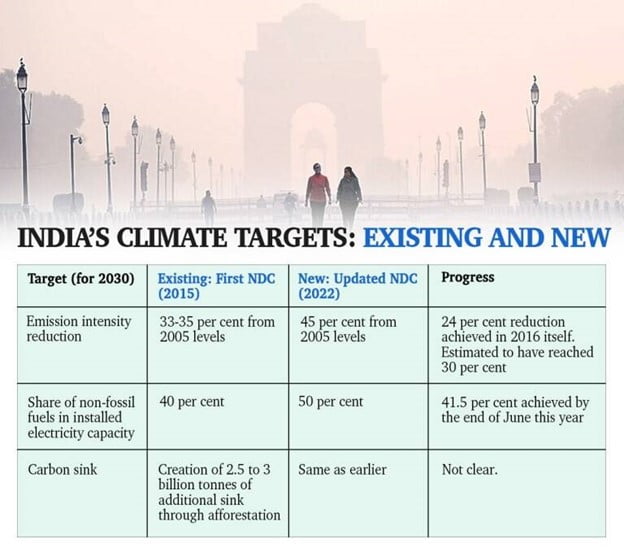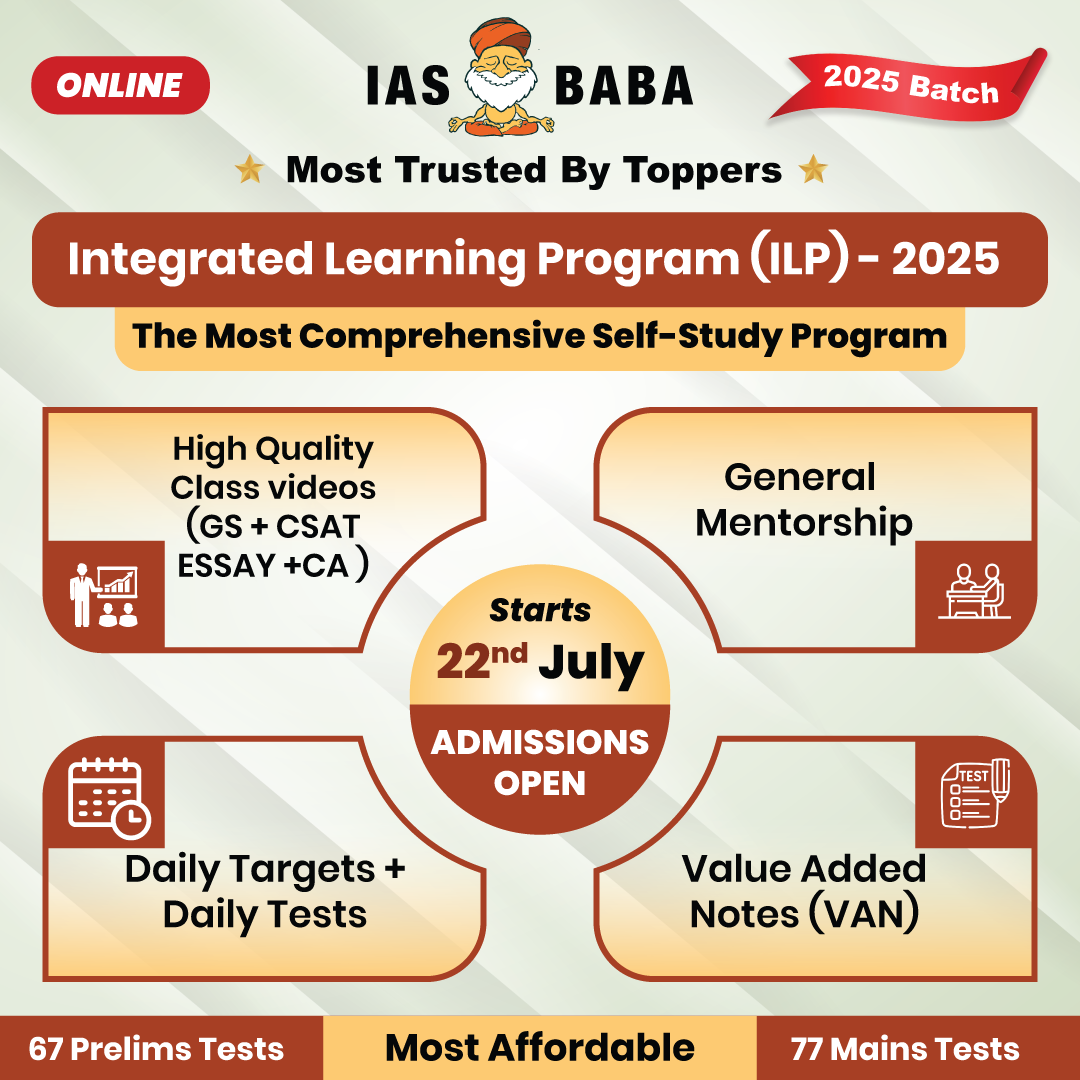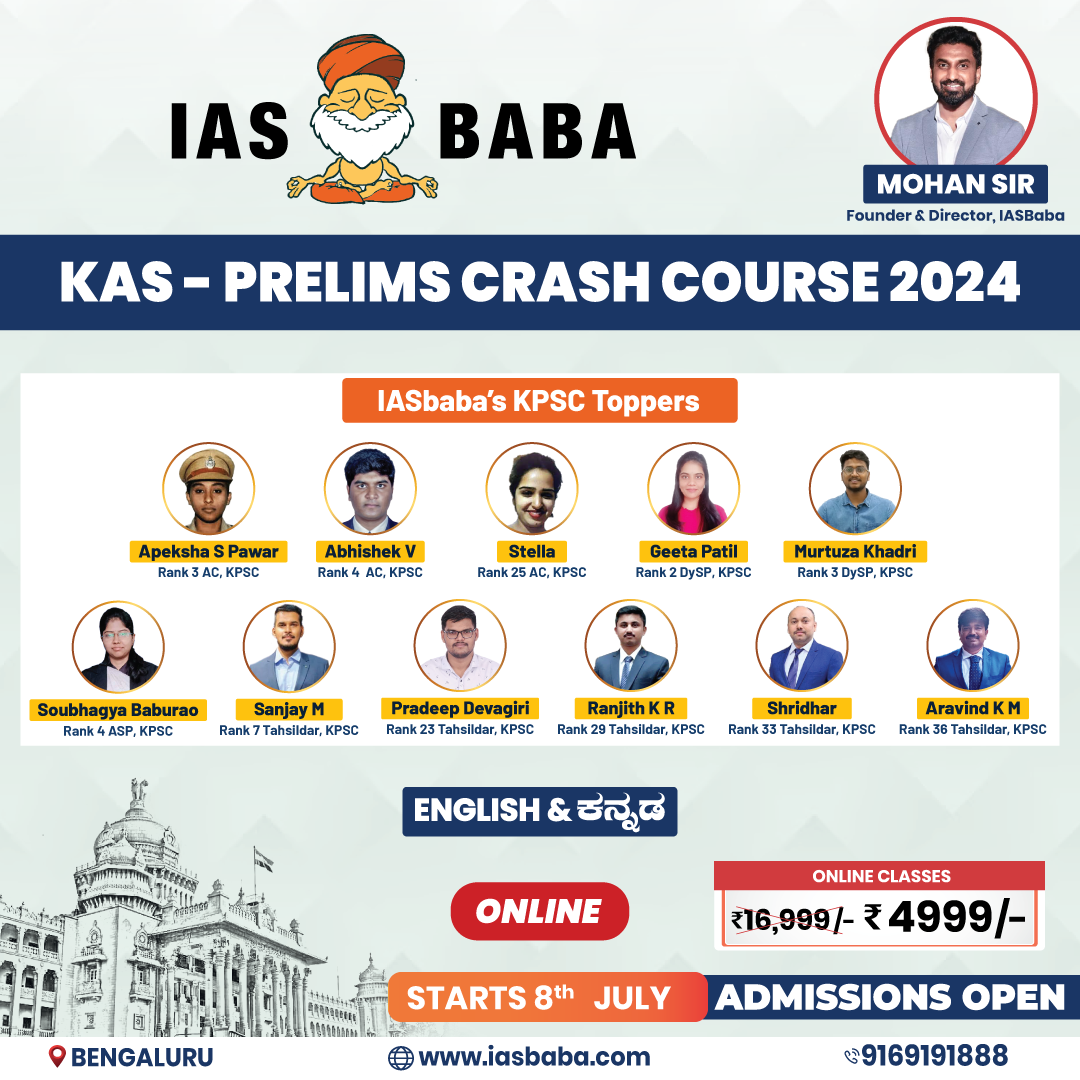IASbaba's Daily Current Affairs Analysis
Archives
(PRELIMS & MAINS Focus)
Syllabus
- Prelims – Polity & Governance
In News: Rajya Sabha Chairman M Venkaiah Naidu said in the Upper House that MPs did not have immunity from being arrested in criminal cases — when the House is in session or otherwise.
- He said MPs could not avoid summons from law enforcement agencies.
What happened?
- Leader of Opposition in the Rajya Sabha has claimed he was “insulted” as he was summoned by the Enforcement Directorate during the working hours of Parliament.
- For this Chairman said, it was “a wrong notion” among members that they have privilege from action by agencies while Parliament is in session.
- He cited Article 105 of the Constitution, Section 135A of the Civil Procedure Code and Supreme Court Judgments.
- He stated that in criminal matters, MPs are not on a different footing than a common citizen. That means MPs do not enjoy any immunity from being arrested in a criminal case during the Session or otherwise.
Article 105 of the Constitution, it says:
- Subject to the provisions of the Constitution and rules and standing orders regulating the procedure of Parliament, there shall be freedom of speech in Parliament;
- No member shall be liable to any proceedings in any court in respect of any thing said or any vote given by him in Parliament or any committee thereof;
- The powers, privileges and immunities of each House of Parliament, and of the members and the committees of each House, may from time to time be defined.
Section 135A of Civil Procedure Code
- It exempts from arrest and detention under civil process members of Parliament, Legislative Assemblies and Councils, those part of an ongoing meeting or committee of such a House, and during 40 days before and after such meeting, sitting or conference.
- It also says that no member shall be arrested in a civil case 40 days before and after the adjournment of the House and also when the House is in session.
- No member can be arrested within the precincts of Parliament without the permission of the House to which he/she belongs.
The Supreme Court view
- In July 2021, the SC rejected a plea by the Kerala government to withdraw criminal cases against its MLAs, who destroyed public property and disrupted a Budget speech in the Assembly in 2015.
- The state had claimed parliamentary privilege and immunity from criminal prosecution, arguing that the incident occurred inside the Assembly hall. They also said that prior sanction of the Speaker was necessary before the registration of an FIR by the police.
- But the SC held that legislators who indulge in vandalism and general mayhem cannot claim parliamentary privilege and immunity from criminal prosecution, and that this could not be called “essential legislative action”.
- The Court also held that vandalism on the floor of the Assembly could not be equated with the right to protest by Opposition legislators.
Source: Indian Express
Previous Year Question
Q.1) Consider the following statements: (2016)
- No criminal proceedings shall be instituted against the Governor of a State in any court during his term of office.
- The emoluments and allowances of the Governor of a State shall not be diminished during his term of office.
Which of the statements given above is/are correct?
- 1 only
- 2 only
- Both 1 and 2
- Neither 1 nor 2
Syllabus
- Prelims – Polity & Governance
In News: The centre has given a one-year extension to Cabinet Secretary Rajiv Gauba.
- Gauba, former Union Home Secretary, was in 2019 appointed to the country’s top bureaucratic post for two years.
- This is his second extension on the post. He was given a one-year extension in August last year.
Cabinet Secretary
- The Cabinet Secretary is the top-most executive official and senior-most civil servant of the Government of India.
- She/he is the ex-officio head of the Civil Services Board, the Cabinet Secretariat, the IAS, and all civil services under the rules of business of the government.
- She/he ranks eleventh on the Indian order of precedence.
- She/he is under the direct charge of the PM and is appointed for a fixed tenure of two years.
- The Cabinet Secretariat is responsible for the administration of the Transaction of Business and the Allocation of Business Rules 1961.
Functions
- She/he facilitates smooth transaction of business in Ministries/ Departments of the Government.
This Secretariat provides:
- Secretarial assistance to the Cabinet and its Committees
- Assists in decision-making in Government by ensuring Inter-Ministerial coordination ,
- Ironing out differences amongst Ministries/ Departments
- Evolving consensus through the instrumentality of the standing/ adhoc Committees of Secretaries
Extension
- In 2019 All India Services (Death-Cum-Retirement-Benefits) Rules, 1958, was amended by Government to provide extension.
- According to All India Services (Death-Cum-Retirement-Benefits) Rules, 1958, the government can give extension in service to a cabinet secretary provided the total tenure does not exceed four years.
- As per the modified rules, the central government may give an extension in service for a further period not exceeding three months, beyond the period of four years to a cabinet secretary.
Source: Indian Express
Previous Year Question
Q.1) Which of the following is/are the function/functions of the Cabinet Secretariat? (2014)
- Preparation of agenda for Cabinet Meetings
- Secretarial assistance to Cabinet Committees
- Allocation of financial resources to the Ministries
Select the correct answer using the code given below.
- 1 only
- 2 and 3 only
- 1 and 2 only
- 1, 2 and 3
Q.2) Consider the following statements: (2016)
- The Chief Secretary in a State is appointed by the Governor of that State.
- The Chief Secretary in a State has a fixed tenure.
Which of the statements given above is / are correct?
- 1 only
- 2 only
- Both 1 and 2
- Neither 1 nor 2
Syllabus
- Prelims – Geography – Current Affairs
In News: Kerala Chief Minister wrote to his Tamil Nadu counterpart, seeking CM’s intervention in regulating water discharge from Mullaperiyar dam.
Mullaperiyar Dam
- The Mullaperiyar, a 126-year-old dam, is located on the confluence of the Mullayar and Periyar rivers in Kerala’s Idukki district.
- The dam stands at the height of 53.66 metres and 365.85 metres in length.
- It is operated and maintained by the Tamil Nadu for meeting the drinking water and irrigation requirements of five of its southern districts.
- According to a 999-year lease agreement made during the British rule the operational rights were handed over to Tamil Nadu.
- The dam intends to divert the waters of the west-flowing river Periyar eastward to the arid rain shadow regions of the Tamil Nadu.
Periyar River
- The Periyar River is the longest river in the state of Kerala with a length of 244 km.
- It is also known as ‘Lifeline of Kerala’ as it is one of the few perennial rivers in the state.
- Periyar River originates from Sivagiri hills of Western Ghats and flows through the Periyar National Park.
- The main tributaries of Periyar are Muthirapuzha, Mullayar, Cheruthoni, Perinjankutti.

Source: Indian Express
Previous Year Question
Q.1) Consider the following pairs:
Reservoirs: States
- Ghataprabha: Telangana
- Gandhi Sagar: Madhya Pradesh
- Indira Sagar: Andhra Pradesh
- Maithon: Chhattisgarh
How many pairs given above are not correctly matched?
- Only one pair
- Only two pairs
- Only three pairs
- All four pairs
Syllabus
- Prelims – Environment – Current Affairs
- Mains – GS 3 (Environment)
In News: As India strengthens its climate targets, a look at the progress so far.
- Nine months after Prime Minister made a few headline-grabbing promises at the climate change conference in Glasgow last year, the government, converted two of those into official targets, which would now be part of India’s international climate commitments for 2030.

- Along with the above mentioned new targets, PM also said that at least 500 GW of India’s installed electricity generation capacity in 2030 would be based on non-fossil fuel sources.
- Also, India promised that it would ensure avoided emissions of at least one billion tonnes of carbon dioxide equivalent between now and 2030.
- These two promises have not been converted into official targets.
- PM also announced a net zero target for India for the year 2070.
India’s progress
The upward revision of the two climate targets — those relating to reductions in emissions intensity and proportion of non-fossil sources in electricity generation — do not come as a surprise.
India is on way to achieve its existing targets well ahead of the 2030 timeline.
Emission
- India’s emissions intensity was 24 per cent lower than the 2005 levels in the year 2016
- It is very likely that the 33 to 35 per cent reduction target has already been achieved, or is very close to being achieved.
- A further reduction of 10-12 per cent from here, to meet the new target, does not appear too challenging
Electricity
- The other target — having at least 40 per cent of electricity coming from non-fossil fuels — has officially been reached.
- According to the latest data from the power ministry, 41.5 per cent of India’s current installed electricity capacity of 403 GW is now powered by non-fossil fuels.
- Renewables (wind, solar and others) alone account for more than 28 per cent of this capacity while hydropower contributes over 11 per cent.
- With most of the new capacity additions happening in the renewable energy sector, a 10 per cent rise in the share of non-fossil fuels in electricity generation is not an unrealistic target.
Tricky Glasgow promises
Two promises made in Glasgow have not been converted into official targets.
- India announced that India’s non-fossil fuel electricity generation capacity would touch 500 GW in 2030.
- And also India would cut at least one billion tonnes of carbon dioxide equivalent from its net projected emissions between now and 2030.
Both these promises were tricky.
The 500 GW non-fossil fuel electricity capacity target for 2030 is not easy.
- Of the current installed capacity of 403 GW, over 236 GW, or 58.5 per cent comes from fossil fuel sources, while non-fossil fuels, which include not just renewables like solar or wind but also hydropower, nuclear and others, make up only 167 GW.
- Capacity additions from non-fossil sources would have to triple in the next 10 years to reach the 500 GW target.
The promise to reduce at least one billion tonnes of carbon dioxide equivalent from the cumulative projected emissions till 2030 was even more problematic.
- It was the first time that India had enunciated any climate target in terms of absolute emission reductions.
- But it appears it was announced without much preparatory work. India does not have any official projection of its emissions in 2030.
- In the absence of a baseline, the target would have been meaningless.
Financial and technological support
- India’s enhanced climate commitments were likely to be contingent on the availability of international finance and technology from the developed countries.
- The updated NDC does talk about the need for low-cost international finance and transfer of technology, but does not make achievement of targets contingent on their availability. This was the case in the previous NDC as well.
Source: Indian Express
Syllabus
- Prelims – Current Affairs
- Mains – GS 3 (Economy)
In News: The Union government has found that 70 lakh beneficiaries under the National Food Security Act are “suspect” and has shared their data with states for “ground verification”
- Centre said that If out of those 70 [lakh] even 50 or 60 per cent are actually found to be not genuine, that space could also be created.
- As per data shared by the Food Ministry, of the 4.74 crore ration cards deleted or cancelled by states and Union Territories in the last nine years, 4.28 crore have been deleted/cancelled between 2014 and 2021.
- Under the NFSA of 2013, 35 crore people can be covered across the country. As per Food Ministry data, the current NFSA coverage stands at 79.74 crore.
- About 1.58 crore people can still be covered under the NFSA.
- Government also launched the Common Registration Facility for ration cards. By using this facility, a person can apply for a ration card from anywhere in the country.
National Food Security Act (NFSA), 2013
Objective:
- To provide for food and nutritional security in the human life cycle approach, by ensuring access to adequate quantities of quality food at affordable prices to people to live a life with dignity.
Coverage:
- The Act provides coverage for nearly 2/3rd of the country’s total population, based on Census 2011 population estimates.
- 75% of rural and 50% of urban population is entitled to receive highly subsidized food grains under two categories i.e Antyodaya Anna Yojana(AAY) households and Priority Households (PHH).
- The Act entitles 35 kg of food grains as per Antyodaya Anna Yojana Households per month, whereas 5kg of food grains per Priority Households per person.
- The eldest woman of the beneficiary household (18 years or above) is considered ‘Head of Family’ for the purpose of issuing ration cards.
National Food Security Act: Provisions
- The NFSA assigns joint responsibilities to the federal and state governments.
- The NFSA mandates the centre with the responsibility of allocating and transporting food grains to designated depots in the states and UTs.
- The centre must provide central assistance to states/UTs for the distribution of food grains from authorized FCI godowns to the doorsteps of Fair Price Shops.
- States and union territories are responsible for identifying eligible households, issuing ration cards, distributing foodgrain entitlements through fair price shops, licensing and monitoring Fair Price Shop (FPS) dealers, establishing an effective grievance redress mechanism, and strengthening the Targeted Public Distribution System (TPDS).
- The National Food Security Act (2013) also includes provisions for Targeted Public Distribution System reforms, such as cash transfers for food entitlement provisioning.
- Direct Benefit Transferinvolves the cash equivalent of the subsidy being transferred directly into the bank accounts of eligible households.
Significance
- It is beneficial to the agricultural sector.
- It also helps the government control food prices.
- Creation of job opportunities: Because agriculture is a labor-intensive industry, a boost in the agricultural sector would result in more job opportunities.
- This would boost economic growth and lead to a reduction in poverty.
- Health benefits: Access to nutritious food would improve the public’s overall health.
- Food security is also important for the nation’s global security and stability.
Criticism
- The Act fundamentally talks about hunger and its eradication but fails to take into account the evils of undernutrition and removing the same. Thus, the Act should strive to include both, Right to Food as well Right to Nutrition.
- The Act also faced opposition from the Farmer’s Union, contending that the Act would nationalize agriculture, making the Government buy, sell and hoard the majority of agricultural production.
- Furthermore, it would reduce farmers’ bargaining power and minimize the support extended to marginal and small farmers.
- The Act also allows private entities in the supply chain, which allows room for profit-making and unfair trade practices.
- The leakages and corrupt practices in the Public Distribution System and supply chain also stand as an obstacle to the efficient functioning of the Act.
The National Food Security Act of 2013 is an important step toward addressing the country’s food insecurity and hunger, but it requires restructuring and the incorporation of new changes in various areas in order to achieve its goal.
Source: Indian Express
Previous Year Question
Q.1) With reference to the provisions made under the National Food Security Act, 2013, consider the following statements: (2018)
- The families coming under the category of ‘below poverty line (BPL)’ only are eligible to receive subsidised food grains.
- The eldest woman in a household, of age 18 years or above, shall be the head of the household for the purpose of issuance of a ration card.
- Pregnant women and lactating mothers are entitled to a ‘take-home ration’ of 1600 calories per day during pregnancy and for six months thereafter.
Which of the statements given above is/are correct?
- 1 and 2 only
- 2 only
- 1 and 3 only
- 3 only
Syllabus
- Prelims – Current Affairs
- Mains – GS 3 (Economy)
Context: Addressing the challenges in new-age digital commerce
Growth of Digital Commerce
- India’s consumer behaviour has experienced radical transformation at the most fundamental levels.
- The rise in smartphone use fuelled by affordable data plans has catalysed an online revolution in the country.
- The novel coronavirus pandemic has further accelerated the process of digital inclusion, and it is now not only routine to transact online and have food, personal care items delivered at the one’s doorstep, but it is also common to learn online, have medical consultations online, and even resolve disputes online.
- These realisations have given India the opportunity to disrupt the status quo with its innovative abilities.
- Systems such as the Unique Identification Authority of India (UIDAI) and Aadhaar, the Unified Payments Interface (UPI) and the Ayushman Bharat Digital Mission have reengineered markets.
Left out
- Despite the rapid advancement of digital platforms on the one hand and the pervasiveness of the Internet-enabled phone on the other, small enterprises such as local kirana stores have not gained from this.
- Online purchases from “near and now” inventory from the local store remain in a digital vacuum.
- This is because, to sell on numerous platforms, sellers must maintain a separate infrastructure, which only adds costs and limits participation.
- The distinct terms and conditions of each platform further limit the sellers’ flexibility.
- Consequently, small and medium-sized businesses have lost their freedom to choose and participate in the country’s e-commerce system at their will and on their terms.
- Alarmingly, centralising digital commerce transactions on a single platform creates a single point of failure.
Wider choice and access
- The Department for Promotion of Industry and Internal Trade (DPIIT) of the Government of India established the Open Network for Digital Commerce (ONDC) to level the playing field by developing open e-commerce and enabling access to small businesses and dealers.
- The ONDC network makes it possible for products and services from all participating e-commerce platforms to be displayed in search results across all network apps.
- This achieves the dual objective of wider choice for consumers on the one hand and access to a wider consumer base for sellers on the other.
- The ONDC began its pilot in five cities in April 2022, i.e., New Delhi, Bengaluru, Coimbatore, Bhopal and Shillong. Currently, the pilot has expanded to 18 cities, and there are immediate plans to add more cities.
- With India’s e-commerce industry set to reach $200 billion by 2027, this shift from a platform-centric paradigm to democratisation of the nation’s online market will catalyse the inclusion of millions of small business owners and kirana businesses.
Better outcomes
- Disputes will be the obvious by-product of this e-commerce revolution. Therefore, it is imperative to support this initiative with a modern-day, cost-effective, timely and high-speed dispute resolution system.
- The framework must adequately and efficiently cater to facets such as participants residing or operating in different geographic regions and the mass prevalence of low-value online transactions.
- Online Dispute Resolution, or ODR as it is popularly called has the propensity to work alongside the incumbent setup and deliver quick, affordable and enforceable outcomes.
- The ODR can be tailormade for the specific use case keeping the participants in mind.
- ODR can also involve advanced automation, the use of technologies such as artificial intelligence and machine learning to enable resolutions at the same time as it would take to initiate a transaction over the network.
- Thus ODR can not only digitise the entire value chain but can also facilitate an enhanced user experience.
- Many e-commerce companies have turned to the ODR with the realisation that in order to maximise transactions it is important to ensure a positive dispute resolution experience.
There is growing adoption
- The ODR is no more a distant dream for India as well.
- Governments, regulators and private enterprises have been adopting and encouraging its use.
- For instance, the National Payments Corporation of India (NPCI) has mandated platforms in the UPI ecosystem to adopt the ODR for complaints and grievances connected to failed transactions.
Significance
- The ODR will help mitigate litigation risk and provide valuable insights into problems faced by consumers.
- The courts and consumer forums can do away with matters which do not warrant their intervention, thus easing the judicial logjam.
- Consumers are provided with another choice for effective redress of their grievances, thereby building trust, confidence and brand loyalty.
Source: The Hindu
Previous Year Question
Q.1) With reference to foreign-owned e-commerce firms operating in India, which of the following statements is/are correct? (2022)
- They can sell their own goods in addition to offering their platforms as market-places.
- The degree to which they can own big sellers on their platforms is limited.
Select the correct answer using the code given below:
- 1 only
- 2 only
- Both 1 and 2
- Neither 1 nor 2
Daily Practice MCQs
Q.1) Udyam Sakhi Portal, is an initiative of which of the following ministry?
- Ministry of Labour and Employment
- Ministry of Finance
- Ministry of Micro, Small and Medium Enterprises
- NITI Aayog
Q.2) Consider the following statements Navigation with Indian Constellation (NAVIC)
- NAVIC consists of a constellation of three geostationary, four geosynchronous and two on-standby satellites.
- NAVIC will facilitate accurate real-time positioning and timing services over India and the region around it extending to 1,500 km.
Choose the incorrect statements:
- 1 only
- 2 only
- Both 1 and 2
- Neither 1 nor 2
Q.3) Consider the following statements
- Cabinet Secretary is the ex-officio head of the Civil Services Board.
- S/He ranks eleventh on the Indian order of precedence.
- S/He is under the direct charge of the PM and is appointed for a fixed tenure of two years.
Choose the correct statements:
- 1 and 3
- 3 only
- 1 and 2
- 1, 2 and 3
Comment the answers to the above questions in the comment section below!!
ANSWERS FOR ’6th August 2022 – Daily Practice MCQs’ will be updated along with tomorrow’s Daily Current Affairs.
ANSWERS FOR 5th August 2022 – Daily Practice MCQs
Q.1) – c
Q.2) – a
Q.3) – d
















